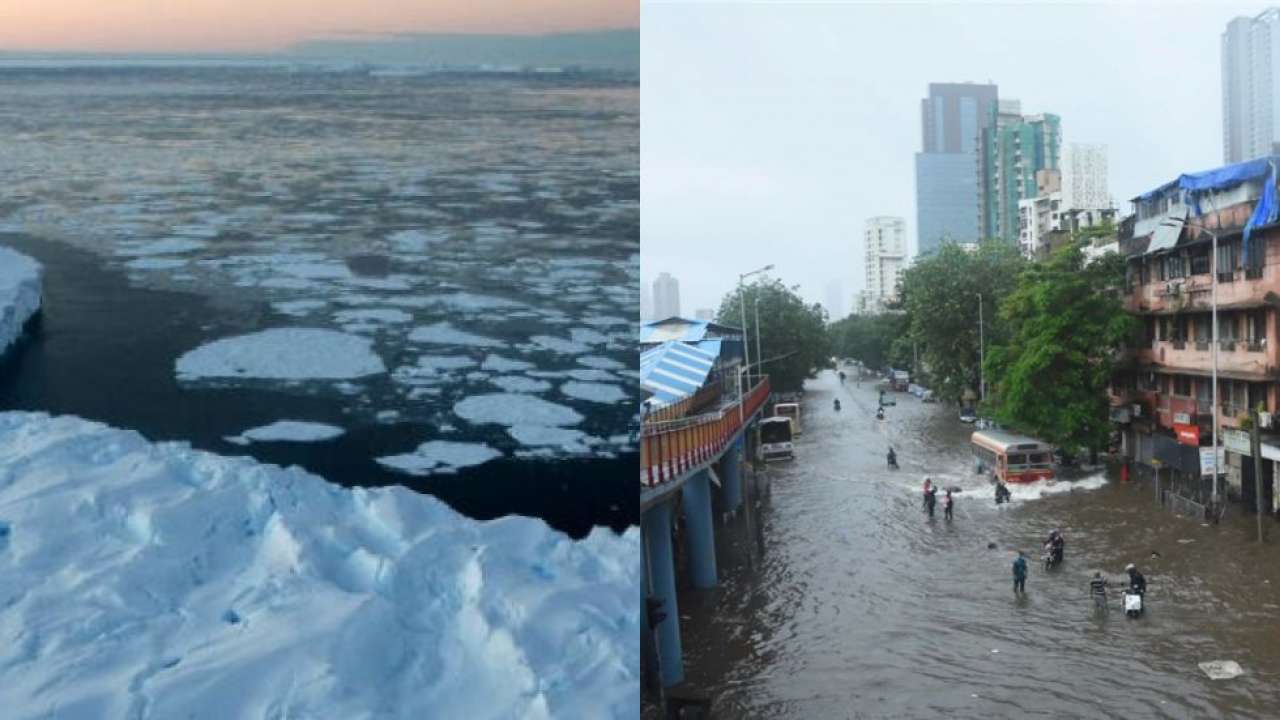
A new paper suggests that ice loss during summer in the Arctic’s Kara Sea region may be the trigger behind extreme rainfall events being experienced by central India in September.
The study has been conducted by the National Centre for Polar and Ocean Research, which falls under the Ministry of Earth Sciences, GOI.
The findings suggest a correlation between the increasing frequency of extreme September rains in central India (>150 mm per day) and the speed of summer sea ice loss in the Arctic. Furthermore, it compares the ice loss during two recent periods of warming, from 1920-1940 and more recent period of 1980s.
The paper, ‘A possible relation between Arctic sea ice and late season Indian Summer Monsoon Rainfall extremes’, found the trend to be stronger in the more recent period.
While it is still unclear if this rapid sea ice decline can influence extreme weather events in the tropics, or the extreme rainfall events during monsoon in India, scientists from NCPOR have proposed that it may be causing a high-pressure area over Northwest Europe. The scientists have found that extreme rainfall events in late monsoon can be induced by the sea ice decline.
upper level atmospheric circulation changes due to Arctic sea ice loss and very warm sea surface temperatures over the Arabian Sea could together contribute to increase in extreme monsoon rain in central India, particularly in the month of September.
According to Sourav Chatterjee, lead author of the study from NCPOR, “As the sea ice reduces in the Barents-Kara Sea region of the Arctic Ocean, it allows more convection and upward air motion over the open ocean during summer. This air then descends at a further south location over northwest Europe and intensifies a deep anticyclonic atmospheric circulation. The associated meandering of the jet stream also contributes to it. This abnormal upper atmospheric disturbance is then further propagated towards subtropical Asia extending over the Indian landmass. The upper-level atmospheric circulation change along with an above-normal Arabian Sea surface temperature help in enhanced convection and moisture supply - resulting in extreme rainfall events during August-September,”
Arctic Amplification, or the increasing rate of warming of the Arctic region compared to the rest of the world, is often associated with increasing frequency of mid-latitude extreme weather events.
The paper notes, “In summary, our results indicate (1) since the 1980s, rapidly declining summer SIE (sea ice extent) in the KS (Kara Sea) region exhibits a more robust relationship with the frequency of ISMR (Indian summer monsoon rainfall) extremes, compared to mean ISMR intensity; (2) extreme precipitation events in central India during the late phase of ISMR season can be explained by the combined effect of the upper atmospheric circulation anomalies resulting from reduced SIE in the KS region and low-level circulation anomalies over west-central India supported by warm SST anomalies in the north-western Arabian Sea. The extent of sea ice contribution to developing the large-scale upper-level circulation anomalies and their role in favouring ISMR extremes need to be studied in further detail with a combination of observation and modelling studies, given that they often diverge in conclusions on extra-polar impacts of Arctic sea ice changes.”